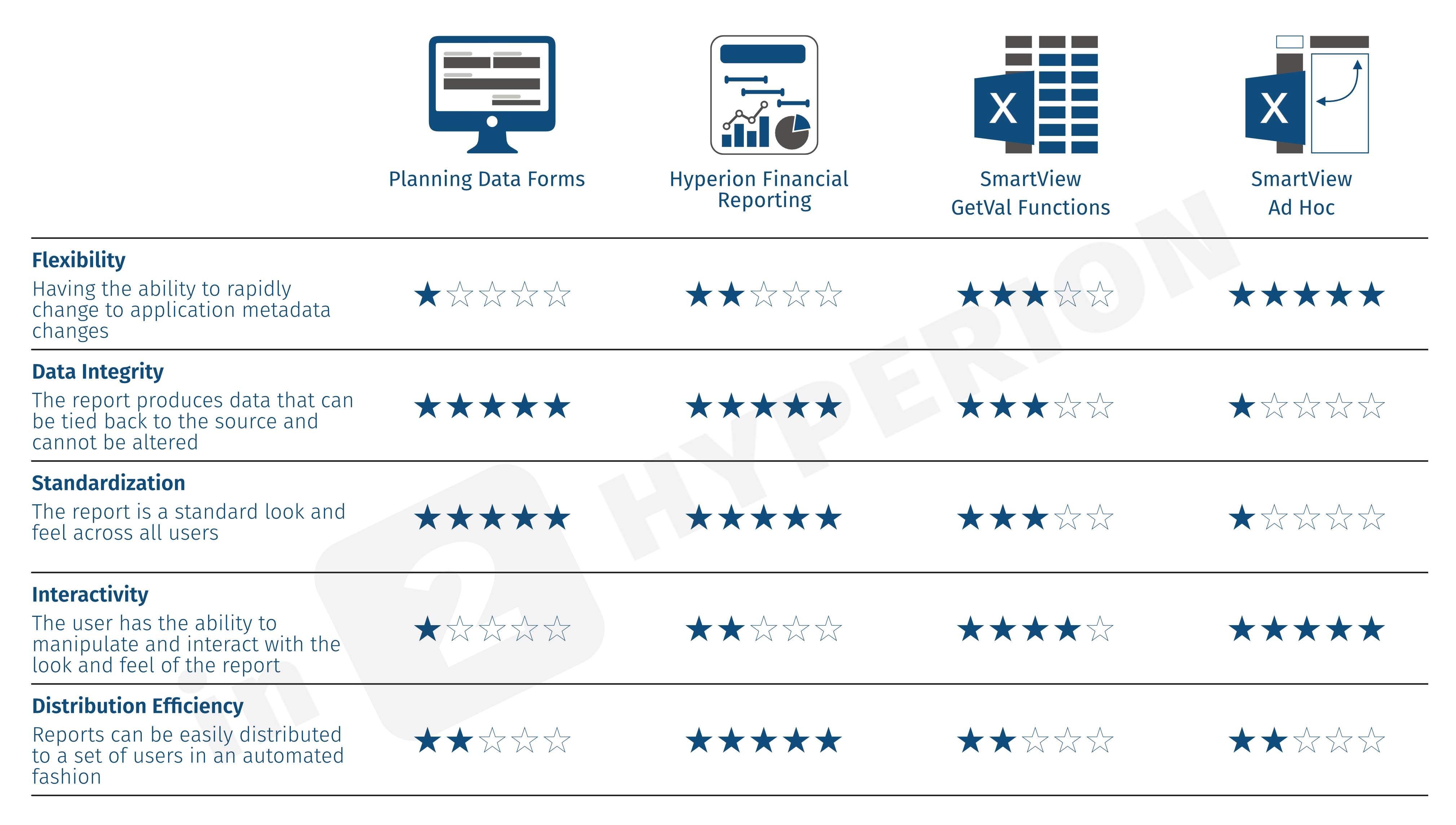Choosing a Reporting Mechanism in Planning
Reports out of Hyperion Planning are typically identified in 2 categories.
- Standard “canned” reports – These reports are used generically in a global aspect to report data in common formats and standardized views. These are often generated in volume and printed for presentations and executive review.
- Ad hoc reports – These reports are more flexible, often adjusted to explain current variances and market conditions. These reports are most likely generated by analysts and managers producing unique views to explain variances that exist at a point in time. The need to alter, change, and customize these reports are essential to identify and explaining current business conditions.
Reporting from Hyperion Planning can be completed in 3 (debatably 4) ways. Deciding which reports are developed, or produced, and in which delivery method, is critical to making the most of the reporting capabilities and development time available.
The recommended approach for reports that are distributed globally, need to have a consistent look and feel, and use standard hierarchies and financial definitions, is to build them in Hyperion Financial Reporting. This will enable users to execute the exact same report, with their specific point of view, and distribute it to anybody in the company. It can also be mass distributed by email to thousands of users for their specific business ownership when data is finalized. Reports can be grouped into books so users can easily run a set of reports for their line of business quickly and easily. Development of reports in HFR take a little longer are can be more time consuming to change, so selecting reports in this delivery method should be evaluated and considered carefully.
Reports that consistently change, are not required to be mass produced, or don’t require a defined format, are more commonly produced in SmartView/Excel. This delivery method provides the ultimate flexibility in creativity and customization. These reports can be rapidly produced and development and is cost effective. These reports, although extremely flexible, require complete ownership on data validation by the users, as they don’t change automatically to the changes in the hierarchies of the application. Developing reports in SmartView/Excel is extremely beneficial when the report changes rapidly and it supports the ability to quickly identify business variances and explain those variances to management.
The following matrix will help you identify the best reporting method for your environment.








Leave a Reply
Want to join the discussion?Feel free to contribute!